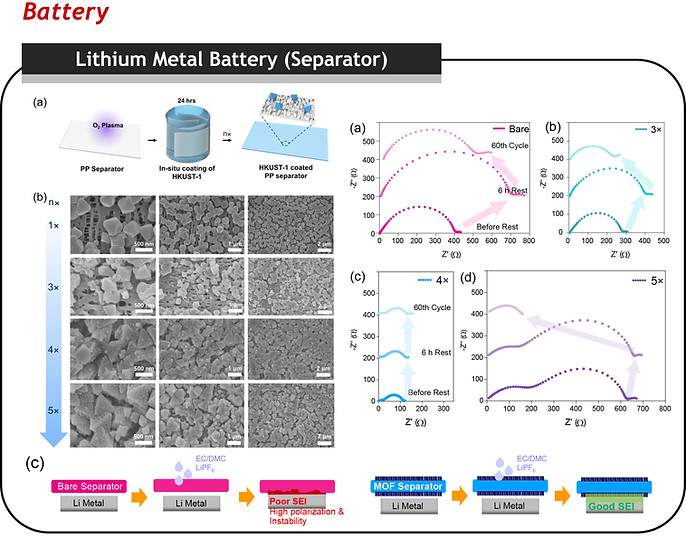
Energy storage devices I

Supercapacitors are of high importance as electrochemical energy storage devices attributing to their outstanding power performance, excellent reversibility and long cycle life. But meanwhile, they suffer from low energy when compared with batteries. Pseudocapacitive materials with a high theoretical capacitance hold a great promise in boosting the energy storage capability for supercapacitors. The emergence of nanoarchitectured current collectors aims to reach their full potentials in charge storage by addressing the challenging issues such as the intrinsically low electrical conductivity, and the sluggish charging–discharging behavior of most pseudocapacitive materials.
Energy storage devices II

Increased adoption of portable electronic devices, electric vehicles, and large-scale energy storage systems in our daily activities has led to an increased demand for high-performance lithium-ion batteries (LIBs). Among the critical components of LIBs, the separator plays a pivotal role in ensuring battery safety and high performance by preventing direct contact between the anode and cathode, while also facilitating ion transport during the charge–discharge cycles. Traditionally, separators are fabricated from polyolefin materials with high mechanical strength and chemical stability. However, these materials suffer from poor thermal stability, which can lead to safety hazards like thermal runaway under high-temperature conditions. Various modifications to separator materials have been explored to address these limitations, including the incorporation of inorganic fillers and surface coatings, and the development of composite separators.
One promising strategy for improving battery performance involves the integration of metal–organic frameworks (MOFs) into separators. MOFs, renowned for their high surface areas, tunable pore structures, and outstanding thermal stabilities, have demonstrated significant potential in lithium–sulfur (Li–S) batteries. Specifically, MOF-coated separators act as both physical and chemical barriers, effectively mitigating polysulfide migration and enhancing cycling stability. In addition to their application in Li–S systems, MOFs have also been investigated for their ability to enhance the thermal and electrochemical performance of lithium-metal anodes.